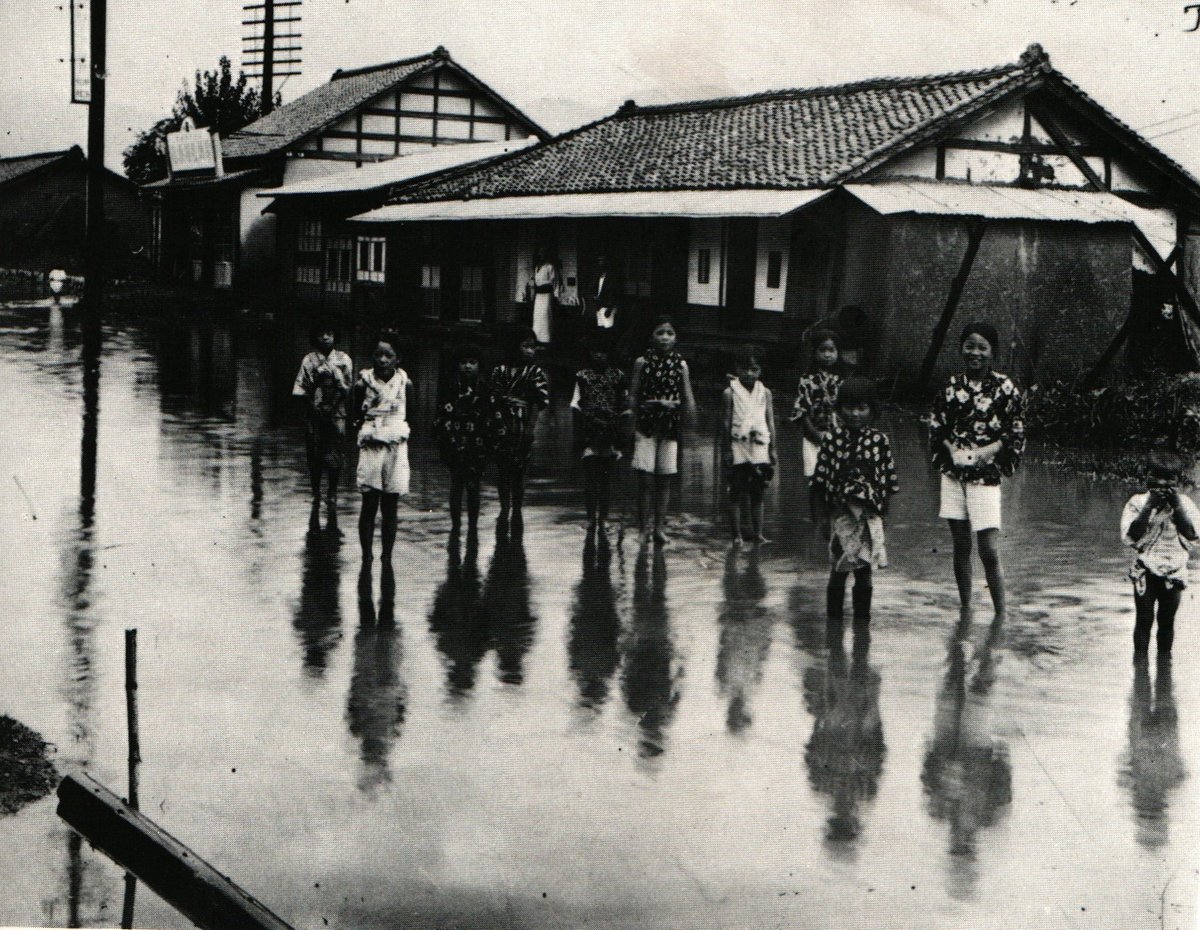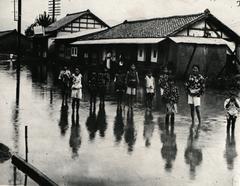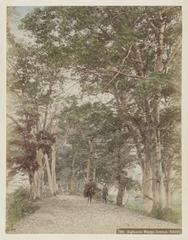
Kōshū Kaidō: Visiting Hours, Tickets, and Travel Guide to Tokyo Historical Sites
Date: 14/06/2025
Introduction
The Kōshū Kaidō (甲州街道) is one of Tokyo’s most historically significant routes, originating in the Edo period as a vital artery connecting Edo (modern-day Tokyo) with Kai Province (today’s Yamanashi Prefecture) and beyond. Established by the Tokugawa shogunate in the early 17th century, it fostered political control, commerce, and cultural exchange while shaping the development of numerous post stations—some of which have evolved into modern districts such as Shinjuku and Fuchū. Today, the Kōshū Kaidō invites visitors to explore a living tapestry of Edo-period heritage interwoven with Tokyo’s vibrant urban fabric. This comprehensive guide details its history, key attractions, practical visitor information (including hours, tickets, and accessibility), and recommendations for making the most of your journey. Enhance your experience with digital tools such as the Audiala app, which offers audio guides and interactive maps (Nippon.com; SKDesu; Japan This!; Japan Guide; Go Tokyo).
Historical and Cultural Foundations
Origins and Legacy
The Kōshū Kaidō is one of the five major Edo-period highways (Gokaidō) laid out by the Tokugawa shogunate, beginning at Nihonbashi—Edo’s symbolic “kilometer zero”—and extending west. Along its 44 post stations, the highway enabled the sankin-kōtai system, requiring daimyō (feudal lords) to journey regularly between their domains and Edo. This policy fostered urban growth, economic exchange, and cultural vibrancy along the route, many traces of which endure in the character of present-day neighborhoods (Wikipedia; Nippon.com).
Economic and Social Impact
Often called the “Wine and Silk Route,” the Kōshū Kaidō was pivotal for transporting Yamanashi’s silk and wine to Edo, boosting local economies and giving rise to bustling inns, teahouses, and markets. Post stations became centers for interaction among samurai, merchants, and travelers, many of whom left enduring cultural traditions and crafts (SKDesu).
Cultural Heritage and Preservation
Remnants of Edo-period architecture—such as machiya townhouses, stone markers, and shrines—can be found throughout Tokyo, especially in areas like Shinjuku and Fuchū. Annual festivals along the route, including sankin-kōtai reenactments, perpetuate Edo-era customs and reinforce local identity (Japan This!).
Influence on Arts and Identity
The Kōshū Kaidō inspired ukiyo-e masters like Utagawa Hiroshige and remains a symbol of Japan’s modernization. Its association with figures such as Kondō Isami of the Shinsengumi adds further historical depth (SKDesu).
Key Landmarks and Attractions: Visiting Hours & Tickets
Nihonbashi: Historic Gateway
- Nihonbashi Bridge: Kilometre zero for Japan’s highways. Open 24 hours; free.
- Mitsukoshi Department Store: Established 1673; open 10:30 AM–8:00 PM (Mitsukoshi Official Site).
- Coredo Muromachi: Traditional crafts and modern retail; open 11:00 AM–9:00 PM.
Yotsuya: Samurai Heritage
- Yotsuya Suga Shrine: Linked to kabuki legends; open 6:00 AM–5:00 PM; free.
- Shinmichi-dori: Traditional izakaya alley; evenings.
Shinjuku: Urban Legacy
- Shinjuku Gyoen National Garden: Once a daimyō estate; 9:00 AM–4:30 PM (closed Mondays); admission required.
- Hanazono Shrine: Open 6:00 AM–5:00 PM; free.
- Golden Gai: Historic alleys with bars; open from 6:00 PM; cover charges may apply.
Yoyogi & Meiji Shrine
- Yoyogi Park: 5:00 AM–8:30 PM; free.
- Meiji Jingu Shrine: Sunrise to sunset; free (Meiji Jingu Official Site).
Suginami & Kōenji
- Kōenji: Vintage shops; open 11:00 AM–8:00 PM.
- Asagaya Pearl Center: Covered shopping street; 10:00 AM–9:00 PM.
Mitaka & Musashino
- Ghibli Museum: 10:00 AM–6:00 PM (closed Tuesdays); tickets must be bought in advance (Ghibli Museum Official Site).
- Inokashira Park: 5:00 AM–9:00 PM; free.
Koganei
- Edo-Tokyo Open Air Architectural Museum: 9:30 AM–5:30 PM (closed Mondays); Adults 400 yen, university students 320 yen, high school and younger free (Edo-Tokyo Museum).
Fuchū
- Ōkunitama Shrine: Daily; free entry. Hosts Kurayami Matsuri in spring.
- Fuchū Kyodo-no-Mori Museum: 9:00 AM–4:30 PM (closed Mondays); Adults 200 yen.
Hino
- Hino Shinsengumi Furusato Museum: 9:00 AM–5:00 PM (closed Mondays); Adults 300 yen.
- Sekisho-ato Park: Daily; free.
Hachiōji & Mt. Takao
- Hachiōji Castle Ruins: 24 hours; free.
- Mount Takao: Cable car 8:00 AM–5:30 PM (seasonal); one-way 490 yen.
Practical Visitor Information
Access & Transportation
- Starting Point: Shinjuku Station, a major hub for JR, Keio, Odakyu, and Tokyo Metro lines (Japan Guide).
- Walking/Cycling: The route between Shinjuku and Hachioji is approximately 35 km. Walking segmented portions is recommended.
- Public Transport: JR Chuo and Keio lines parallel the route, offering easy access. Use Suica or Pasmo cards (Go Tokyo).
- Bicycle Rentals: Available near Shinjuku and Hachioji.
Accessibility
- Most urban stretches are wheelchair-friendly, but some historic sites may have steps or gravel. Check individual sites for details.
Guided Tours & Events
- Guided walking and cycling tours are available—advance booking recommended (Walk Japan).
- Major festivals include Fuchū Kurayami Matsuri (spring), Kōenji Awa Odori (August), and Hachioji Festival (August).
Travel Tips
- Visit in spring (cherry blossoms) or autumn (foliage) for the best scenery.
- Wear comfortable shoes, carry cash for small purchases, and use translation apps for non-English signage.
- Download the Audiala app for audio guides and maps.
Notable Experiences Along the Kōshū Kaidō
- Historic Post Towns: Explore remnants of Edo-era shukuba in Shinjuku, Hino, and Fuchū.
- Food & Shopping: Sample handmade soba, local sweets, and browse retro shopping streets like Asagaya Pearl Center.
- Nature: Enjoy Tama River parks and views from Mt. Takao.
- Cultural Activities: Participate in matsuri, visit museums, or stay in a traditional ryokan.
- Photographic Spots: Capture Nihonbashi Bridge, festival parades, and panoramic vistas at Mt. Takao.
Frequently Asked Questions (FAQ)
Q: Do I need tickets to visit the Kōshū Kaidō itself?
A: The road is public and free to walk. Admission is required for certain museums and attractions.
Q: Where can I buy Ghibli Museum tickets?
A: Purchase in advance online or at authorized vendors; tickets are not sold at the museum.
Q: Are guided tours available in English?
A: Yes, several operators offer English-language tours (Walk Japan).
Q: Is the route suitable for families and wheelchair users?
A: Most urban sites are accessible and family-friendly; check specific locations for details.
Q: What are the best times to visit?
A: Spring and autumn offer mild weather and seasonal events.
Conclusion
The Kōshū Kaidō offers a living journey through Tokyo’s Edo-period legacy, blending historic sites, vibrant festivals, traditional cuisine, and scenic landscapes. Whether you walk, cycle, or join a guided tour, the route provides layers of cultural discovery, from the iconic Nihonbashi Bridge through the lively streets of Shinjuku and tranquil shrines of Fuchū to the gateway of Hachiōji and Mt. Takao.
Plan your visit by checking opening hours, ticket requirements, and accessibility for each destination. For audio guides, maps, and deeper historical context, download the Audiala app. Stay updated with local festivals and events, and share your adventure to promote appreciation and preservation of this extraordinary cultural treasure.
Sources and Further Reading
- Exploring the Historic Kōshū Kaidō: A Visitor’s Guide to Tokyo’s Iconic Edo-Period Route, 2025 (Nippon.com)
- Cultural Significance and Visitor Guide to the Kōshū Kaidō: Exploring Tokyo’s Historic Highway and Its Heritage Sites, 2025 (SKDesu)
- Exploring the Kōshū Kaidō in Tokyo: Visiting Hours, Tickets, and Historical Sites Guide, 2025 (Japan This!)
- Practical Visitor Information and Recommended Experiences, 2025 (Japan Guide)
- Go Tokyo – Official Tokyo Travel Guide, 2025 (Go Tokyo)
- Walk Japan Tours, 2025 (Walk Japan)































































































































































































































